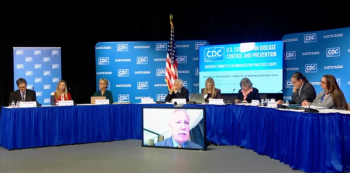
Students Create Low-Cost Biosensor to Detect Contaminated Water in Developing Nations
Diarrheal disease is the second-leading cause of death in children under 5 years old killing as many as 1.5 million children worldwide every year. These startling statistics from the World Health Organization (2009) point to the reason why a group of undergraduate students from Arizona State University is working to develop a low-cost biosensor a simple device that would detect contaminated drinking water.
2012 ASU iGEM team members and summer assistants: (back, L-R) Carlos Alvarado, Ethan Ward, Melinda Jenner (summer assist.), Hyder Hussein, Ryan Muller, Joe Barth (summer assist.); (front, L-R) Nisarg Patel, Amanda Ispas, Madeline Sands, Ellen Qin, and Abhinav Markus. Photo by Jacob Mayfield
Diarrheal disease is the second-leading cause of death in children under 5 years old killing as many as 1.5 million children worldwide every year. These startling statistics from the World Health Organization (2009) point to the reason why a group of undergraduate students from Arizona State University is working to develop a low-cost biosensor a simple device that would detect contaminated drinking water.
An interdisciplinary team of nine students is participating in the 2012 International Genetically Engineered Machine (iGEM) competition a prestigious global event that challenges students to design and build simple biological systems made from standard, interchangeable parts.
The ASU team started its research during the summer to prepare for the synthetic biology competition. Its goal is to create a user-friendly, DNA-based biosensor that can detect major pathogens. The low-cost device would be used in the field rather than in a laboratory.
We are developing a biosensor that will detect pathogenic bacteria, such as Shigella, Salmonella and E. coli, that cause diarrhea, says Ryan Muller, an undergraduate student in ASUs School of Life Sciences and an iGEM team leader. Ideally, you would use our biosensor to check different water supplies in third world-countries to determine whether the water is safe to drink.
The team is working on two biosensor designs.
The first one targets DNA, explains Nisarg Patel, a molecular biosciences and biotechnology major in School of Life Sciences, as well as a political science major. Since each type of pathogen has different DNA, we want to create complementary sequences sequences that match a specific DNA. We will take bacterial samples from the water, pull out the DNA and check whether it complements our DNA probe. If it does, it will produce a color response and then well know that the water is contaminated.
Made for portability, Patel said the second design tests the membranes of bacteria. When using the device to test water, if certain proteins attach to a bacterial membrane, the sample will turn blue indicating the water is contaminated with a pathogen and would not be safe to drink.
"The advantage of this design over previous designs in the field lies in the cheap production of probes and the enzymatic chain reaction, says Abhinav Markus, a biomedical engineering student in ASU's Ira A Fulton Schools of Engineering. Samples can be tested in the field with minimal cost and high sensitivity.
When the ASU iGEM team first met this summer, Madeline Sands, an anthropology major in the universitys School of Human Evolution and Social Change, pitched the idea to build a low-cost biosensor. Sands previously traveled to Guatemala as part of an ASU field experience. There, she conducted community health research under the direction of Jonathan Maupin, a medical anthropologist. Sands realized that contaminated water presents a serious health problem for developing countries.
With constant earthquakes, landslides and rains in Guatemala, it can often be difficult to determine if a water source is contaminated, says Sands. My time there made it clear that having a way to detect contaminated water could lead to a further reduction in the incidence and morbidity of diarrhea.
In October, the team will present its device during the iGEM regional competition at Stanford University. If successful, they will move on to the global competition in November at Massachusetts Institute of Technology.
Other ASU iGEM team members include: Rohit Rajan, Ethan Ward, Hyder Hussain, Amanda Ispas and Ellen Qin. Kylie Standage-Beier, a biological sciences major and previous iGEM team member, serves as an advisor.
Arizona State University iGEM team sponsors include School of Life Sciences; Barrett, The Honors College; Ira A. Fulton Schools of Engineering; School of Biological Health Systems and Engineering; College of Liberal Arts and Sciences; School of Politics and Global Studies; and Departments of Chemistry and Biochemistry.
Source: Arizona State University College of Liberal Arts and Sciences
Â
Newsletter
Stay prepared and protected with Infection Control Today's newsletter, delivering essential updates, best practices, and expert insights for infection preventionists.






